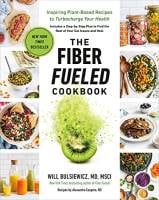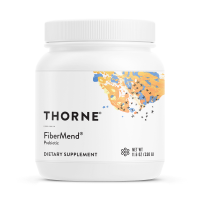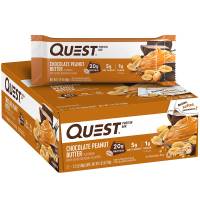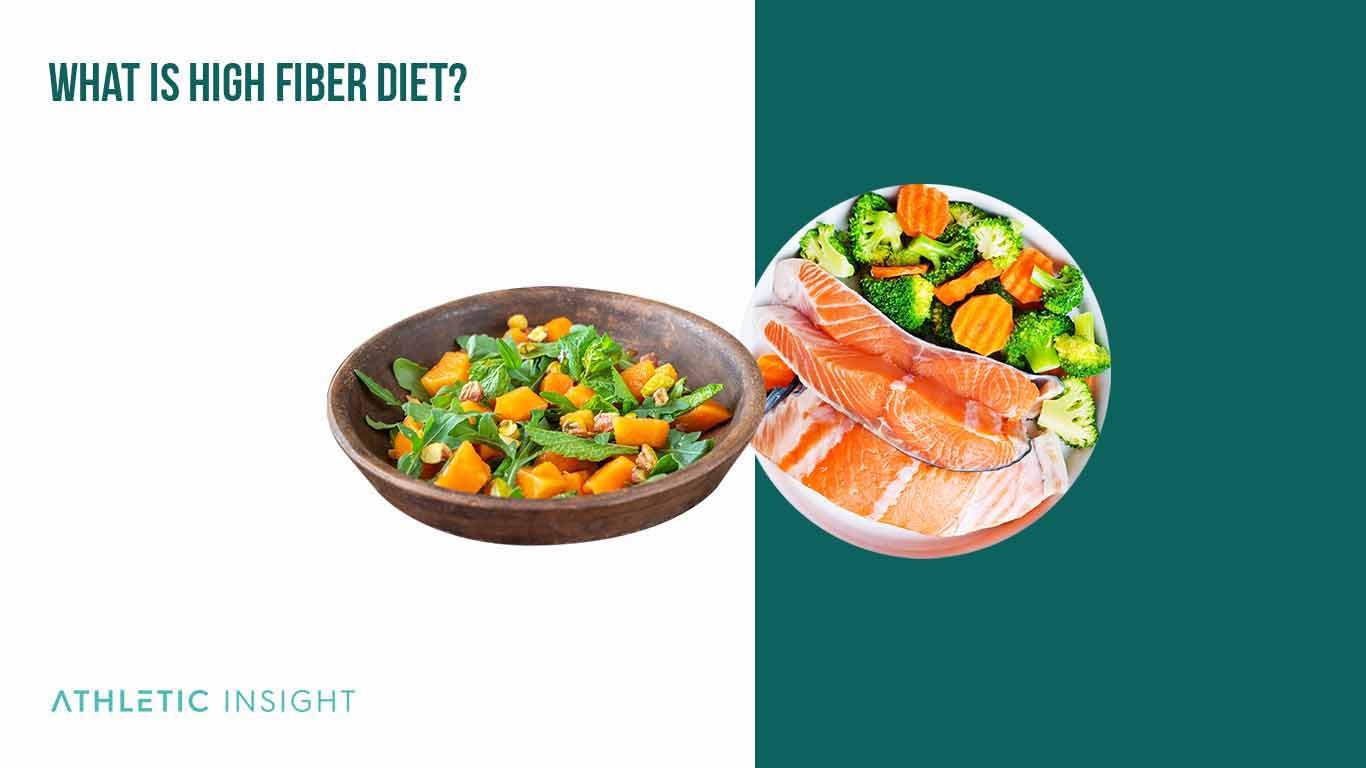In today’s world, people are becoming increasingly health-conscious and aware of the role nutrition plays in maintaining good health. One crucial component of a healthy diet is fiber, a nutrient in many plant-based foods. Naturally, this leads to the questions of what is a high fiber diet and what is a low fiber diet? Is one better than the other and how would you choose?
A high-fiber diet has numerous benefits over a low-fiber diet. Not only does it improve digestive health and reduce the risk of chronic diseases, but it also helps maintain a healthy weight and increases satiety. However, it is important to note that sudden changes in fiber intake can lead to gastrointestinal discomfort, and individuals should gradually increase their fiber intake to avoid any adverse effects.
On the other hand, a low-fiber diet can lead to a range of health issues, including constipation, weight gain, and an increased risk of chronic diseases. Therefore, it is highly recommended to incorporate a variety of high-fiber foods into your daily diet to improve overall health and well-being. Remember, a balanced diet with adequate fiber intake is key to a healthy lifestyle.
High Fiber Recipes

Fiber Supplements

Fiberlicious Foods

Overall, it’s clear that a high fiber diet is essential for maintaining good health. However, many people struggle to get enough fiber, as the typical Western diet tends to be low in fiber.
What Is a High Fiber Diet?
A high fiber diet is a diet that is high in dietary fiber, which is a type of carbohydrate the body cannot digest. Instead, fiber passes through the digestive system largely intact, providing various health benefits.

There are two types of dietary fiber: soluble fiber and insoluble fiber. Soluble fiber will dissolve in water, forming a substance similar to gel in the digestive system. This type of fiber can help cholesterol levels diminish, regulate blood sugar levels, and promote the growth of beneficial bacteria in the gut.
Good sources of soluble fiber include legumes, barley, and fruits such as apples and oranges. Vegetables such as carrots and sweet potatoes are also a source of soluble fiber. Insoluble fiber will not dissolve when placed in water and adds bulk to the stool, helping to promote regular bowel movements and prevent constipation.
This type of fiber also prevents diverticulitis and other digestive disorders. Good sources of insoluble fiber include whole grains like brown rice and quinoa, nuts, seeds, fruits such as berries and bananas, and vegetables like broccoli and spinach.
Both help maintain good digestive health and overall health. It is recommended that adults consume between 25 to 30 grams of fiber per day from a variety of sources.
How Does a High Fiber Diet Work?
Fiber is an essential nutrient that is necessary for maintaining optimal digestive health. A fiber-rich diet includes a variety of fruits, vegetables, whole grains, and legumes, all of which provide a significant amount of dietary fiber.
What Is the Main Purpose of a High Fiber Diet?
A high fiber diet plan promotes regular bowel movements and maintains a healthy digestive system. Fiber adds bulk to the stool and helps it move more efficiently through the intestines. That can prevent constipation and reduce the risk of developing colon cancer.
Fiber also helps regulate blood sugar levels, reduce cholesterol levels, and promote a healthy weight. High-fiber foods tend to be more filling, helping to reduce overall calorie intake.
What Is the Best Diet for Irritable Bowel Syndrome?
For individuals with irritable bowel syndrome (IBS), a high-fiber diet can help relieve symptoms such as constipation, diarrhea, and abdominal pain. However, some individuals with IBS will have difficulty tolerating insoluble fiber.
A low-FODMAP diet, which restricts certain types of carbohydrates that can exacerbate IBS symptoms, can benefit some individuals. However, always consult a healthcare professional to develop a personalized dietary plan.
What Is the Best Fiber Diet for Hemorrhoids?
Hemorrhoids are swollen veins in the rectum and anus caused by straining during bowel movements. The best diet to tackle hemorrhoids is a high-fiber diet which can help soften the stool and reduce the need for straining. Soluble fiber can be particularly beneficial for individuals with hemorrhoids.
What Is the Best Fiber Diet Before a Colonoscopy?
A low fiber diet is best before a colonoscopy. Before a colonoscopy patients follow a clear liquid diet for at least 24 hours and to avoid high-fiber foods, as they can interfere with the procedure. However, some healthcare professionals recommend a low fiber diet for up to three days before the procedure, ensuring the colon is cleansed.
Here are some foods to avoid before a colonoscopy.
- Whole grains
- Fruits with seeds or skins
- Nuts and seeds
- Raw vegetables
Individuals should consume clear liquids such as water, broth, tea, and clear juices, and follow any specific dietary instructions provided by the healthcare provider.
How To Do the High Fiber Diet?
A fiber rich diet emphasizes foods that are high in fiber to lose weight and improve overall health. To follow a fiber diet, you should start by increasing your intake of fruits, vegetables, whole grains, legumes, and other fiber-rich foods. Drink plenty of water and avoid processed foods and sugary drinks.
High Fiber Recipes

Fiber Supplements

Fiberlicious Foods

Who Should Do the High Fiber Diet?
A high fiber diet is for anyone who wants to improve their health and lose weight. However, it can be particularly beneficial for people with certain health conditions such as diabetes, heart disease, and digestive disorders.
How Long Should You Do a High Fiber Diet?
The duration of a high fiber diet depends on your individual goals and needs. Some people need to follow a fiber diet for a few weeks or months to jumpstart their weight loss journey, while others make it a permanent lifestyle change.
What Are the Phases of the High Fiber Diet?
There are typically no specific phases of a high fiber diet. Instead, the goal is to incorporate more fiber-rich foods into your diet gradually. You can start by adding a serving of fruit or vegetables to each meal and swapping refined grains for whole grains. As you become more comfortable with the diet, you can continue to increase your fiber intake.
What Are the Health Benefits of a High Fiber Diet?
There are many benefits to a high-fiber diet such as the following.

- Regulates bowel movements and prevents constipation
- Improves digestion and reduces symptoms of irritable bowel syndrome (IBS)
- Lowers cholesterol levels and reduces the risk of heart disease
- Helps control blood sugar levels and reduces the risk of developing type 2 diabetes
- Aids in weight management by increasing satiety and reducing overall calorie intake
- Promotes the growth of healthy gut bacteria and improves overall gut health
- High-fiber foods are often rich in vitamins and minerals, such as vitamin C, potassium, and magnesium.
What Are the Health Risks of a High Fiber Diet?
Is it possible to have too much fiber in your diet? While a high fiber diet is generally safe and healthy, adding fiber to your diet gradually and drinking plenty of water will help to avoid digestive discomforts such as bloating, gas, and abdominal pain. It is also important to note that some people need to limit their fiber intake if they have certain digestive disorders.
- Constipation, bloating, and abdominal discomfort
- Development of diverticulitis, a condition in which small pouches called diverticula form in the lining of the colon and become infected or inflamed
- Decrease in bowel movements and an increase in the transit time of food in the digestive system
- The stool becomes hard and dry, causing constipation
- Decreased number of beneficial bacteria in the gut, which can impair digestion and affect the immune system
What Are the Foods That You Can Eat While on a High Fiber Diet?
Many foods are high in fiber and suitable for a high fiber diet. When following a fiber diet food list, it is best to incorporate fiber from as many sources as possible.
- Fruits such as apples, berries, oranges, and pears
- Vegetables such as broccoli, carrots, spinach, and sweet potatoes
- Whole grains such as brown rice, quinoa, and whole wheat bread
- Legumes such as black beans, lentils, and chickpeas
- Nuts and seeds such as almonds, chia seeds, and flaxseeds
What Are the Foods That You Can’t Eat While on a High Fiber Diet?
Many foods are low in fiber and should be limited or avoided while on a high fiber diet.
- Processed foods such as white bread, chips, and sugary cereals
- Fast food such as burgers, fries, and pizza
- Meat products such as hot dogs, sausages, and bacon
- Dairy products such as cheese, ice cream, and whole milk
- Sugary drinks such as soda, sports drinks, and fruit juice
Recipes for a High-Fiber Diet
There are a lot of ways to prepare high-fiber foods so that you can get the maximum benefit without sacrificing flavor. Here’s how to add more fiber in your diet.
High Fiber Recipes

Fiber Supplements

Fiberlicious Foods

- Overnight Oats: Overnight oats are a simple high fiber diet food to try. Mix rolled oats, almond milk, chia seeds, and fruits such as bananas or berries. Let it sit in the fridge overnight to enjoy in the morning for a fiber-filled breakfast.
- Quinoa Salad: Cook quinoa according to the instructions, and mix it with chopped veggies such as cucumber, tomato, and bell pepper. Drizzle with olive oil and lemon juice for a healthy and fiber-rich lunch.
- Roasted Vegetables: Roast vegetables such as broccoli, cauliflower, and Brussels sprouts in the oven with olive oil and spices until they are crispy and tender. These make a delicious and fiber-rich side dish.
- Lentil Soup: Cook lentils with veggies such as onion, carrot, and celery in a pot with vegetable broth. Add spices such as cumin and paprika for flavor. This high-fiber soup is filling and satisfying.
- Chia Seed Pudding: Mix chia seeds and almond milk, and let it sit in the fridge overnight. Add toppings such as fresh fruit, nuts, or coconut flakes for a high-fiber and delicious breakfast or dessert.
- Black Bean and Sweet Potato Tacos: Roast sweet potato cubes in the oven and mix them with black beans, avocado, and cilantro for a fiber-packed filling. Serve in corn tortillas for a delicious and nutritious meal.
- Brown Rice Stir-Fry: Brown rice with stir-fry is a great way to get high protein and high fiber all at once. Cook brown rice and stir-fry it with vegetables such as bell peppers, mushrooms, and broccoli. Add a protein source such as tofu or chicken for a filling and high-fiber meal.
- Apple Cinnamon Oatmeal: Cook rolled oats with almond milk, cinnamon, and chopped apples for a fiber-rich and comforting breakfast. Add nuts or seeds on top for extra crunch.
- Whole Wheat Pasta with Vegetables: Cook whole wheat pasta and toss it with roasted or sautéed vegetables such as zucchini, cherry tomatoes, and spinach. Add a sprinkle of parmesan cheese or a drizzle of olive oil for flavor.
- Berry Smoothie Bowl: Blend frozen mixed berries with almond milk and a banana for a fiber-packed smoothie. Pour into a bowl and top with sliced fruit, granola, or chia seeds for a satisfying breakfast or snack.
Recipes for a Low-Fiber Diet
If you need a lower amount of fiber in your diet to increase your intake of protein, there are still a lot of recipes you can use to make your food delicious. Here are some low-fiber diet foods you can try.
- Creamy Carrot Soup: This soup is made with cooked carrots, cream, and chicken broth. Sauté some onions and garlic, add cooked carrots and chicken broth and then puree the mixture until smooth. Add cream to give it a creamy texture, and season with salt and pepper to taste. This soup is rich and comforting, perfect for a cold day.
- Baked Chicken: Marinated in a blend of lemon juice, herbs, and spices, and then baked until tender and juicy. Marinate chicken breasts in a mixture of lemon juice, olive oil, garlic, and herbs for a few hours, and then bake them in the oven until cooked through. This simple, healthy, and delicious recipe can be enjoyed with roasted vegetables or a salad.
- Grilled Salmon: Seasoned with lemon juice, garlic, and herbs, and grilled to perfection. Season salmon fillets with salt, pepper, lemon juice, garlic, and herbs. Grill them until cooked through. This healthy and flavorful recipe is perfect for summer barbecues or quick dinners.
- Scrambled Eggs: A quick and easy breakfast or dinner option, scrambled eggs are low in fiber and high in protein. Whisk together eggs, salt, pepper, and a little milk, and then cook them in a non-stick pan until they’re fluffy and cooked through. You can also add in vegetables like spinach or mushrooms for added nutrition.
- Mashed Potatoes: Creamy and buttery mashed potatoes are a great side dish for any meal. Boil potatoes until tender, then mash them with butter, cream, and salt to taste. You can also add some herbs like rosemary or thyme for added flavor.
- Roasted Chicken: A classic comfort food, roasted chicken is delicious and low in fiber. Season a whole chicken with salt, pepper, and herbs, and roast it in the oven until cooked.
- Grilled Shrimp: Seasoned with garlic, lemon juice, and herbs, grilled shrimp are a tasty and low-fiber option for seafood lovers. Season shrimp with salt, pepper, garlic, lemon juice, and herbs, and grill them until pink and cooked through. You can also serve them with a side of rice or roasted vegetables.
- Broiled Steak: Tender and juicy, a broiled steak is a delicious and low-fiber option for meat lovers. Season a steak with salt and pepper, and then broil it in the oven until it’s cooked to your liking. You can also add some herbs or a little butter for added flavor.
- Poached Chicken: Tender and moist, poached chicken is a healthy and low-fiber option for those on a low-fiber diet. To make it, simply simmer chicken breasts in chicken broth or water until they are cooked through. This is a great recipe for salads, sandwiches, or as a protein for a stir fry.
- Baked Fish: Seasoned with lemon juice, garlic, and herbs, baked fish is a flavorful and low-fiber option for seafood lovers. After you season fish fillets with salt, pepper, lemon juice, garlic, and herbs, bake them in the oven until they are cooked throughout. You can also serve them with a side of roasted vegetables or a salad.
What Are the Facts About a High Fiber Diet?
A high-fiber diet includes foods such as whole grains, fruits, vegetables, legumes, nuts, and seeds, which are all excellent sources of dietary fiber. Fiber is an essential nutrient that helps regulate digestion, maintain healthy blood sugar levels, lower cholesterol levels, and reduce the risk of chronic diseases such as heart disease, stroke, and certain types of cancer.
Is a High Fiber Diet Considered a Healthy Diet?
A high-fiber diet is considered a healthy diet. Consuming foods rich in dietary fiber, such as fruits, vegetables, whole grains, legumes, nuts, and seeds, can provide essential nutrients, regulate digestion, and reduce the risk of chronic diseases. Fiber is also beneficial for maintaining healthy blood sugar and cholesterol levels. A high-fiber diet can help promote overall health and well-being.
Is a High Fiber Diet for Weight Loss?
A high-fiber diet can aid in weight loss. Foods rich in dietary fiber are low in calories and can help you feel full and satisfied after eating, reducing the overall amount of food you consume. Additionally, fiber can slow down the absorption of sugar into the bloodstream, which can help prevent cravings and overeating.
Is It Possible to Build Muscle While on a High Fiber diet?
While a high-fiber diet will not directly contribute to muscle building, it can support muscle growth by providing the necessary nutrients to support a healthy body. Foods rich in fiber, such as whole grains and legumes, also contain protein, which is essential for muscle growth.
High Fiber Recipes

Fiber Supplements

Fiberlicious Foods

How Much Does a High Fiber Diet Program Cost?
The cost of a high-fiber diet plan can vary depending on the types of foods included and the duration of the program. However, a high-fiber diet can be affordable and easily incorporated into your daily eating habits.
How Long Will It Take to See the Results of a High Fiber Diet?
The results of a high-fiber diet can vary from person to person. However, incorporating more fiber-rich foods into your diet can lead to immediate improvements in digestion and overall health. Long-term benefits of a high-fiber diet, such as a reduced risk of chronic diseases, can take months or even years to see.
Does Meal Timing Matter With the High Fiber Diet?
Meal timing can play a role in the effectiveness of a high-fiber diet. Consuming fiber-rich foods before or during meals can help you feel fuller and more satisfied, which will reduce the overall amount of food you consume.
Additionally, eating high-fiber foods earlier in the day will be more beneficial for regulating blood sugar levels and promoting healthy digestion. However, the most important factor in the success of a high-fiber diet is the consistent consumption of fiber-rich foods throughout the day.
What Is the Difference Between High Fiber Diet and Low Fiber Diet?
The main difference between a high-fiber diet and a low-fiber diet is the amount of dietary fiber consumed. A high-fiber diet includes foods that are naturally high in fiber, such as fruits, vegetables, whole grains, legumes, nuts, and seeds. A low-fiber diet, on the other hand, restricts or limits these types of foods. Low-fiber diets can be recommended for certain medical conditions, such as Crohn’s disease or diverticulitis, to help alleviate symptoms.
What Is the Difference Between High Fiber and Ketogenic Diets?
The main difference between a high-fiber diet and a ketogenic diet is the macronutrient composition. Obtaining fiber on the keto diet is the goal for the program. A high-fiber diet is focused on consuming foods that are high in fiber, while a ketogenic diet is focused on consuming foods that are high in fat and low in carbohydrates.
Ketogenic diets are also known as Keto Diets. There is some fiber in a ketogenic diet, but it is a high-fat, low-carbohydrate diet that promotes weight loss by inducing ketosis, a metabolic state where the body burns fat for energy.
While both diets can be beneficial for weight loss and overall health, they have different mechanisms of action. A high-fiber diet promotes healthy digestion and regulates blood sugar levels, while a ketogenic diet promotes the production of ketones, which can lead to rapid weight loss and improved metabolic health.



